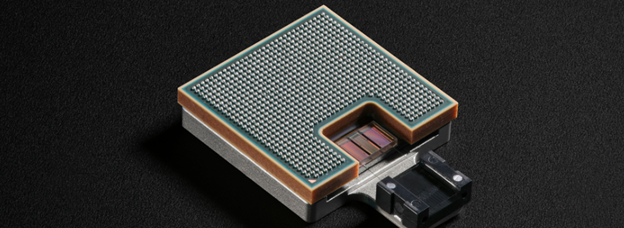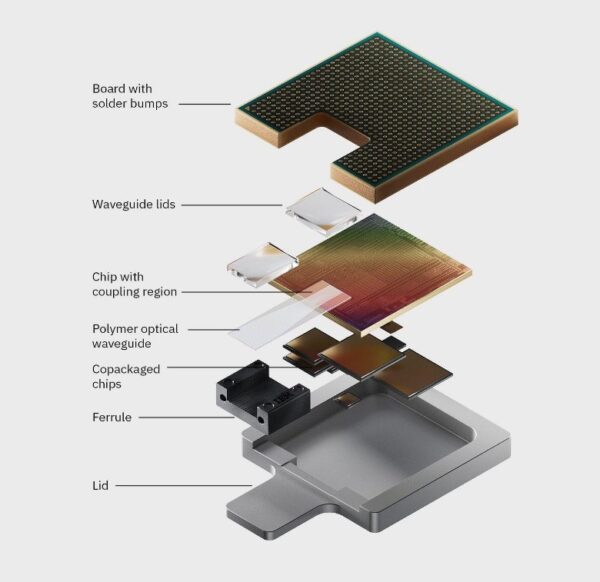IBM’s Breakthrough in Polymer Optical Waveguide Technology

IBM’s innovative polymer optical waveguide (PWG) technology replaces traditional electrical interconnects with optical connections, offering faster, energy-efficient performance.
IBM’s co-packaged optics (CPO) technology incorporates optical links into data center infrastructure, significantly improving bandwidth, reducing latency, and enhancing efficiency.
You can also read: The Future is Flexible: Advancements in Plastic Electronics.
Moreover, IBM’s research reveals this approach reduces energy consumption by over fivefold compared to traditional mid-range electrical interconnects.
Furthermore, the technology increases interconnect cable lengths from one meter to hundreds of meters, addressing scalability challenges in data center communications.
Polymer Optical Waveguides: Revolutionizing Connectivity
At the heart of IBM’s breakthrough are polymer optical waveguides (PWGs), which mark a significant shift from conventional copper-based electrical wiring. PWGs are polymer-based structures that guide light through a core material with a higher refractive index than the surrounding cladding. By enabling total internal reflection, PWGs ensure efficient light confinement, making them essential for optical communication systems and photonic devices.

A detailed exploded view of the prototype for the co-packaged optics module. Courtesy of Research IBM.
Enhanced Bandwidth for Generative AI
The implementation of PWGs achieves a sixfold increase in beachfront density, the number of optical fibers connectable at a chip’s edge. This improvement addresses the rising bandwidth needs of generative AI workloads while reducing energy use compared to traditional copper wiring. By eliminating GPU idling caused by slow data transfer, this technology significantly accelerates AI model training processes.
Advancing AI Infrastructure
IBM’s innovation provides substantial benefits for AI model training, potentially cutting training durations from months to weeks with faster connectivity. This acceleration allows developers to train large language models five times faster, saving energy equivalent to the annual usage of 5,000 U.S. homes per model.
Leadership in AI and Sustainability
IBM’s roadmap includes refining and scaling its co-packaged optics technology to address evolving generative AI computing demands more effectively. Additionally, IBM plans to collaborate with component suppliers, gather client feedback, and prepare for large-scale production to meet business needs. Through these efforts, IBM reinforces its leadership in AI innovation, offering solutions that enhance scalability, efficiency, and sustainability across AI infrastructure.
